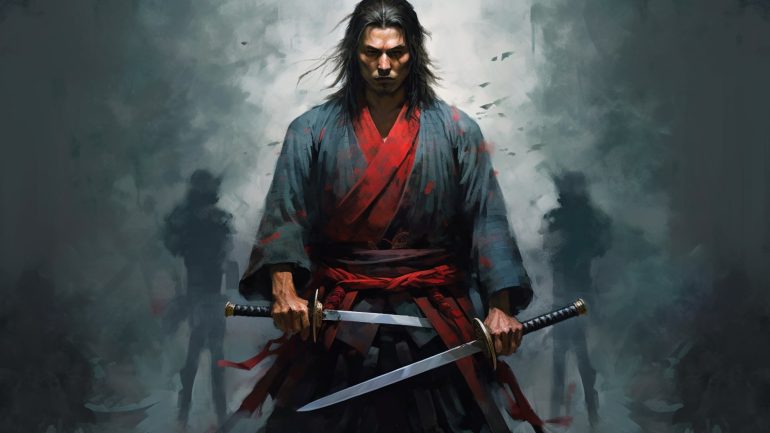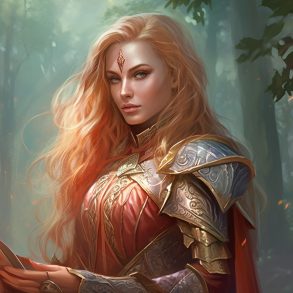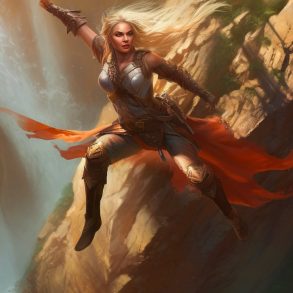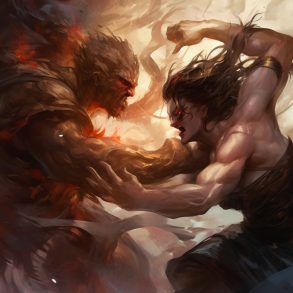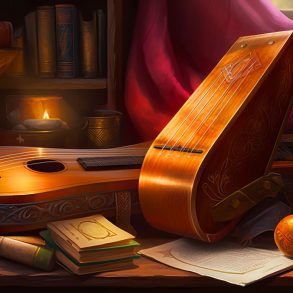Two Weapon Fighting (TWF) is something any character in 5E can do, from Fighters to Wizards and every in between. The rules for doing this are pretty straightforward:
- Taking the attack action whilst wielding a light weapon in each hand, you can make an additional attack with your offhand weapon as a bonus action. (PHB, p. 127)
- Do not add the modifier you’re making the attack roll with, to damage from the offhand weapon attack. For example, at 1st level with a Strength of +3, you could make two attacks with a pair of short swords, the mainhand for 1d6+3 and the offhand one for just 1d6 damage.
- If your weapon has the thrown property, you can choose to throw it instead of making a melee attack.
Weapons eligible for Two Weapon Fighting
We’ve compiled the light weapons list ready for you to wield, and arranged it from most to least damage possible. If you want to take your TWF to the next level, continue reading below.
| LIGHT WEAPON | DAMAGE DIE | ADDITIONAL PROPERTIES |
|---|---|---|
| Short Sword | 1d6 | Finesse |
| Scimitar | 1d6 | Finesse |
| Handaxe | 1d6 | Thrown (range 20/60) |
| Dagger | 1d4 | Finesse, Thrown (range 20/60) |
| Light Hammer | 1d4 | Thrown (range 20/60) |
| Sickle | 1d4 | None |
| Club | 1d4 | None |
How to pump up the Two Weapons Fighting damage
Boost your TWF effectiveness with the following fighting style and feat respectively:
- Two Weapon Fighting – This fighting style (also commonly referred to TWF) allows you to add your ability modifier to the damage of your offhand attack, increasing your damage by up to +5! Only Fighters and Rangers get this style by default, but anyone with a martial weapon proficiency can get it through the Fighting Initiate feat.
- Dual Wielder – A feat can be a steep cost in 5E, but when it enhances your chosen playstyle, it’s often worth it. The Dual Wielder feat gives players several benefits: This feat allows your character to draw two weapons at once, whereas normal object interaction rules only allow one weapon a turn otherwise. Player characters are granted a +1 to your AC whilst wielding two weapons to compensate for not wearing a shield. Additionally, you no longer need to use light weapons to qualify for two weapon fighting. This last point might not seem like much, but besides letting you move up to 1d8 damage weapons (like a longsword or rapier), it also makes it much more likely that you can incorporate magic weapons you find into your character.
The good about Dual Wielding
The huge benefit of two weapon fighting is obvious: you get to deal the bad guys damage (at least) twice in one turn with your favorite light weapons. This is great for abilities that trigger each time you hit (like Rage damage, Divine Smite, etc.), or if you have an important ability that requires you hit (like Sneak Attack). There’s an added benefit when you’re fighting enemy spellcasters, more hits means the other guy has to do more constitution saving throws to maintain concentration!
The bad about Dual Wielding
The biggest drawbacks of TWF for martial characters are having to give up two very helpful things: a hefty +2AC from wearing a shield, and the potential to have a bigger damage die with non-light weapons. Additionally, certain feat combos the aforementioned non-light weapons offer, such as Great Weapon Master and Polearm Master, become unavailable when you sacrifice using them.
Should you choose Two Weapon Fighting?
Melee characters who forego a shield, get to pick a weapon from the bigger damage dealers in an armory. Their weapons typically tend to have damage dies in the range of d10 – d12s/2d6. However, not all classes get proficiency to use these big hitters, or instead focus on Dexterity. Even if you do get proficiency, you may have abilities that work better with TWF, or you may simply prefer your PC using two weapons. Whether dual wielding is for you, largely depends on your character.
In general, Dex-based characters will get the most out of two weapon fighting, as they use Finesse weapons and these have a smaller damage die than their Strength-based counterparts. The highest damage finesse weapon, a rapier, is only a d8: this means the trade off to use d6 (or even d4) light weapons is very minimal, and can actually mean an increase in damage overall from the bonus action attack. On the other hand, Strength based characters have access to harder hitting weapons, which can potentially combine with feats to hit even harder (such as Great Weapon Master and Polearm Master). This makes it a more difficult choice, if all you’re using to decide is the damage potential.
Who is Dual Wielding best for?
- Rogues – Getting an additional chance to trigger your Sneak Attack can go a long way to increasing your damage over time, the extra d4 or d6 of damage doesn’t hurt either! This is particularly potent for the Swashbuckler subclass, as it lets you disengage from multiple enemies in a turn.
- Fighters – The extra damage with the fighting style means that you’ll be very competitive damage wise, even without investing in the feat well into the end of Tier 2.
- Paladins – Now this might not go with some people’s images of Paladins, but the more chances to hit, the more chances to use Divine Smite! This is especially good when you hit level 11 and add a 1d8 of radiant damage to every hit. It’s worth mentioning here that Paladins get access to the 1st level spell Divine Favor, which will add 1d4 radiant damage to each hit, regardless who they attack.
- Barbarians – Rage damage is applied to every hit, which means that you can get another dose of it with your shiny new bonus action attack! This is best for certain subclasses, like the Ancestral Guardian, that trigger their abilities when they attack or hit a target as you’re able to affect more enemies each turn.
Who is Dual Wielding least useful for?
- Rangers – you would think two weapon wielding would be perfect for a class that gets the fighting style by default, but it’s worth noting Rangers wielding two weapons, might often end up missing one of their iconic spells–Hunter’s Mark–as it competes for their bonus action. As players, this is something to ponder when thinking of the action economy of your character.
- Monks – this class already gets a bonus action attack from their Martial Arts feature, making the option to dual wield very unappealing to them.
Being a hero already requires characters to have good hand-eye coordination, but if your own PC has a knack for juggling, a proclivity for going extra on their attacks, or maybe have a tendency to try using their shield as a weapon, you might want to consider giving them a second weapon for their offhand. After all, has anyone ever filed a guild complaint their companions were killing the enemy way too fast, or looking too cool whilst doing it?
